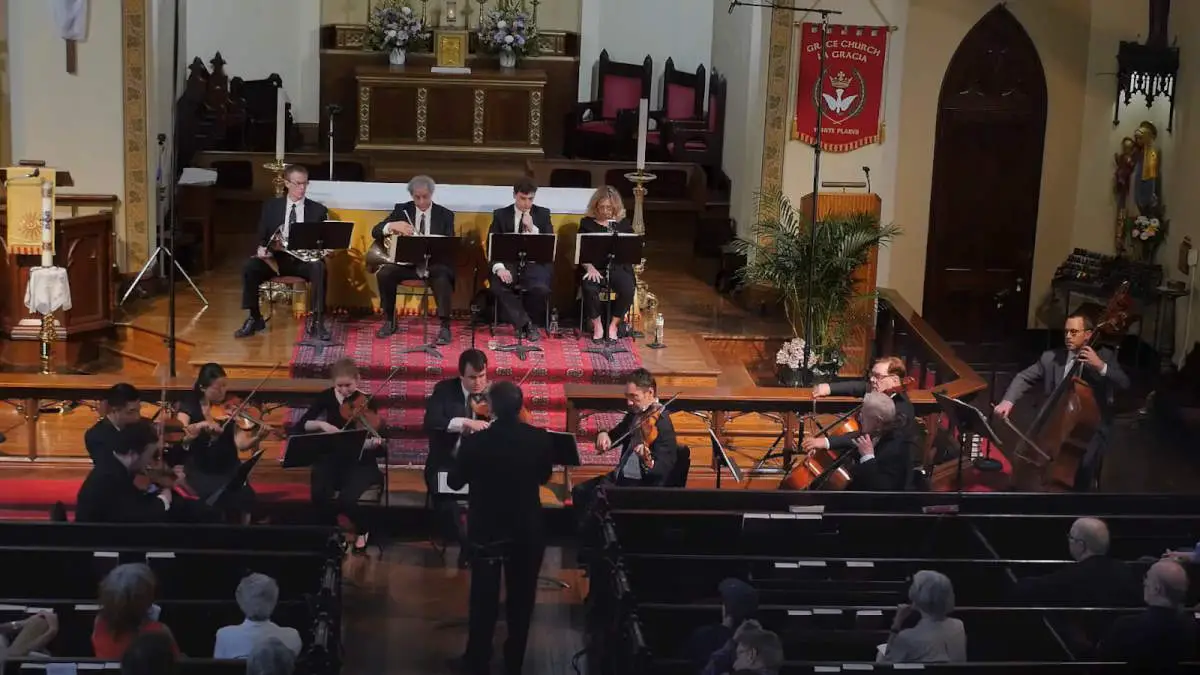Conducted by Vincent Lionti, the Downtown Sinfonietta Chamber Ensemble performs Wolfgang Amadeus Mozart’s Symphony No. 17 in G major, K. 129, in memory of Lawrence Zoernig, 1960-2017, Downtown Sinfonietta cellist. Recorded at the Grace Church in White Plains, NY 10601, United States, on May 17, 2017.
Performers
- Downtown Sinfonietta
- Vincent Lionti, conductor
- Quan Yuan, violin
- Shengua Hu, violin
- Yurika Mok, violin
- Laura Lutzke, violin
- Armand Alpyspaev, viola
- William Frampton, viola
- David Heiss, violoncello
- David Calhoun, violoncello
- David Romano, contrabasso
- Jeffrey Reinhardt, oboe
- Ellen Katz Wilner, oboe
- Peter Reit, horn
- Daniel Culpepper, horn
Wolfgang Amadeus Mozart’s Symphony No. 17
Wolfgang Amadeus Mozart’s Symphony No. 17 in G major, K. 129, composed in 1772 when Mozart was just 16 years old, is a work from his early years, showcasing his burgeoning mastery in symphonic composition. Despite its early place in his oeuvre, this symphony already displays Mozart’s characteristic elegance, melodic richness, and structural clarity.
It is part of a series of symphonies composed during a particularly productive period of his life in Salzburg. Symphony No. 17 is relatively modest in scope compared to his later works, yet it offers a glimpse into the early development of his style, which would later flourish in his more mature compositions.
The symphony is structured in the standard three movements typical of the time:
- Allegro: This opening movement is lively and energetic, characterized by a playful exchange between the strings and winds. The use of G major gives it a bright and optimistic tone, embodying the classical spirit of balance and clarity.
- Andante: The second movement is slower and more expressive, providing a beautiful contrast to the vivacity of the first. It features a graceful melody that showcases Mozart’s ability to write deeply affecting music, even at a young age.
- Allegro: The final movement returns to a brisk tempo, rounding off the symphony with a cheerful and spirited finale. It exemplifies Mozart’s skill in creating engaging and dynamic compositions, leaving the listener with a sense of uplift and satisfaction.
Symphony No. 17, while not as frequently performed or as famous as his later works, remains a valuable piece within Mozart’s repertoire, offering insights into his early development as a symphonic composer.
Sources
- Symphony No. 17 (Mozart) on Wikipedia
- Symphony No.17 in G major, K.129 (Mozart, Wolfgang Amadeus) on the International Music Score Library Project website


